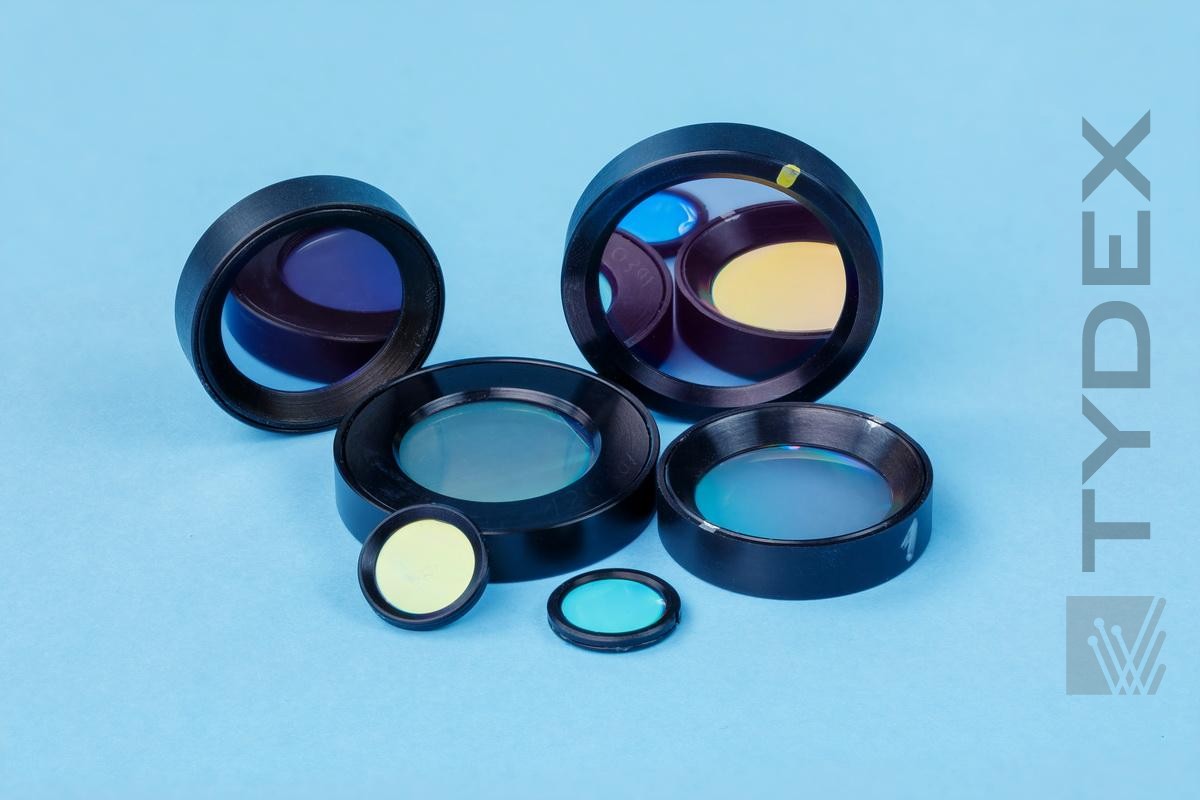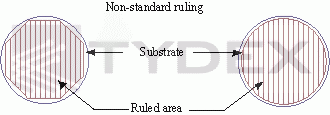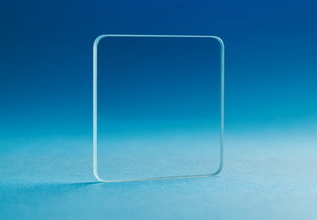IR Polarizers
| Download IR Polarizers Datasheet (PDF, 891 KB) |
IR-polarizers operate in transmission and are designed to polarize IR radiation in the spectral region from 1.5 μm to MM waves. They are a sort of diffraction gratings and available on a variety of crystal and polymer substrates. The polarizer grating is made by forming grooves of a triangle profile on the substrate and subsequent deposition of a metal coating (aluminum) on one of the groove facets.

Applications
- Microscop;
- Thin film layer studies;
- Semiconductors studies;
- Electro-optic modulation systems;
- Molecular orientation studies of crystal or polymer films;
- Imaging;
- Sensors and detectors;
- Spectroscopic instruments.
Features
- Used in wavelength range from NIR to MM;
- Crystal and polymer substrates;
- Very compact with short optical path;
- High IR transmission;
- High degree of polarization;
- Polarizers are supplied in holders (protective ring with marked grid direction).
Tab. 1 Advantages of grid polarizers compared to other types of polarizers.
| Grid polarizers | Wire grid substrate-free polarizers | Brewster and birefringent polarizers |
| Relatively low cost | Valid | Not valid |
| Compactness (optimal correlation between overall dimensions and clear aperture) | Not valid | Valid |
| Zero lateral image displacement at normal incidence | Not valid | Valid |
| Performance insensitive to the angle of incidence | Not valid | Valid |
| Possibility to use one polarizer for the wide wavelength range | Valid | Valid |
| High mechanical durability (for crystal polarizers) | Valid | Not valid |
Types, specification and spectral curves:
Crystal
Polymer
Tab. 2 Parameters of IR-polarizers.
| Substrate material | CaF2 | BaF2 | ZnSe | Ge | Fluorine- plast (teflon) |
Polypropylene | |
| Spectral range, mm | 1-9 | 1.5-12 | 1.5-14 | 8-14 | 1.5-7 | 2-7 | >= 15 |
| Typical operation aperture, mm | D25 x 25 | DD25 x 25 | D25 x 25 | D25 x 25 | D25 | D25 | |
| Standard holder size at typical aperture, mm | D42 x 8 | D42 x 8 | D42 x 8 | D42 x 8 | D42 x 8 or D34.9 x 7.9 |
D40 x 8 | |
| Maximal operation aperture, mm | 50 x 50/ /D50 |
50 x 50/ /D50 |
50 x 50/ /D50 |
50 x 50/ /D50 |
80 | 100 | 45 |
| Grooves per mm | 2400 | 1200 | 1200 | 1200 | 2400 | 1200 | 1200 |
| Transmission efficiency K1 (average) | >70% | >70% | 65-70% (back side AR coated) >50% (uncoated) | >50% (back side AR coated) | 75-85% | 75-80% | 70-90 (avg. 80) @15-1500 μm |
| Transmission of unwanted radiation K2 | 1-2%@ 1.5µm <0.5%@ 2 µm <0,1@ 3-9µm |
1-2%@ 2µm <0.1%@ 11µm |
1-2%@ 2µm <0.1%@ 10µm |
<0.1%@ 10µm |
<1%@ 1.5 µm <0.5%@ 2µm <0.1%@ 3-7µm |
<2%@ 1.5µm <0.1%@ 3µm |
0.2 @15 μm <0.3 @15-600 μm <1 @600-1500 μm |
| Degree of polarization (K1-K2)/ (K1+K2) |
94-97% @1.5µm >98%@ 2µm >99%@ 3-9µm |
94-97% @2µm >99%@ 3-11µm |
94-97%@ 2µm (AR coated) 92-96%@ 2µm (uncoated) >99%@ 10µm |
>99%@ 10µm |
>97%@ 1.5µm >99%@ 2-7µm |
>97%@ 2µm >99%@ 3-7µm |
99.5 @15 μm >96 @15-1500 μm |
| Extinction ratio E=K1/(2*K2) |
15-35@ 1.5µm 70@ 2µm 350@ 3-9µm |
15-35@ 2µm 350@ 11µm |
15-35@ 2µm 325-350@ 10µm (AR coated) 10-25@ 2µm 250@ 10µm (uncoated) |
>250@ 10µm (uncoated) | 40-45@ 1.5µm 70-85@ 2µm 380-430@ 3-7µm |
>40@ 1.5µm 380-400@ 3µm |
100-10000 @15-500 μm 75-200 @500-1500 μm |
Sizes and shapes
Depending on the substrate material we produce polarizers using the ruled grating technique or the photolithography one.
Crystal polarizers
The grid is ruled onto the (normally) round substrate. After ruling the substrate is left uncut.
The shape of ruled area is shown below (polygon or round shape). These additional efforts are made to decrease the substrate size at the same clear aperture (for adjusting the polarizer into the standard setup).

Polymer polarizers
The grid is ruled onto large size material, which is subsequently cut. Thus the clear aperture can be round.
The main standards for clear aperture (CA) of polarizers are D25mm and 25x25mm, which are available from our stock. Polarizers with non-standard sizes, shapes and operational wavelength regions are available on request.
Holder sizes at the standard aperture:
Crystal polarizers: D42mm x T8mm or D34.9mm x T7.9mm
Polymer polarizers: D42mm x T8mm or D34.9mm x T7.9mm
Anti-reflective (AR) coatings
Due to low refractive index of CaF2, BaF2, teflon, and polypropylene, there is no need for AR coatings for their effective operation.
However Germanium and Zinc Selenide have high refractive indices. Therefore to enhance the transmission of polarizers, we supply them Broad Band Antireflective coated over the whole transmission range.
Further enhancement of polarizer transmission is possible by optimizing the coating for specific wavelengths. The resulting transmission depends on the width of the coating spectral range (for narrower wavelength ranges, the transmission within this region is higher).
! Polarizers from our stock are not AR coated. Please request your polarizers depending on their operational spectral region, to optimize the parameters for ZnSe, or Ge items.
For quotation and delivery please fill in our request form.
Optics is ready to be shipped!
Optics Stock
Shipment/ Payment/ Warranty ...






